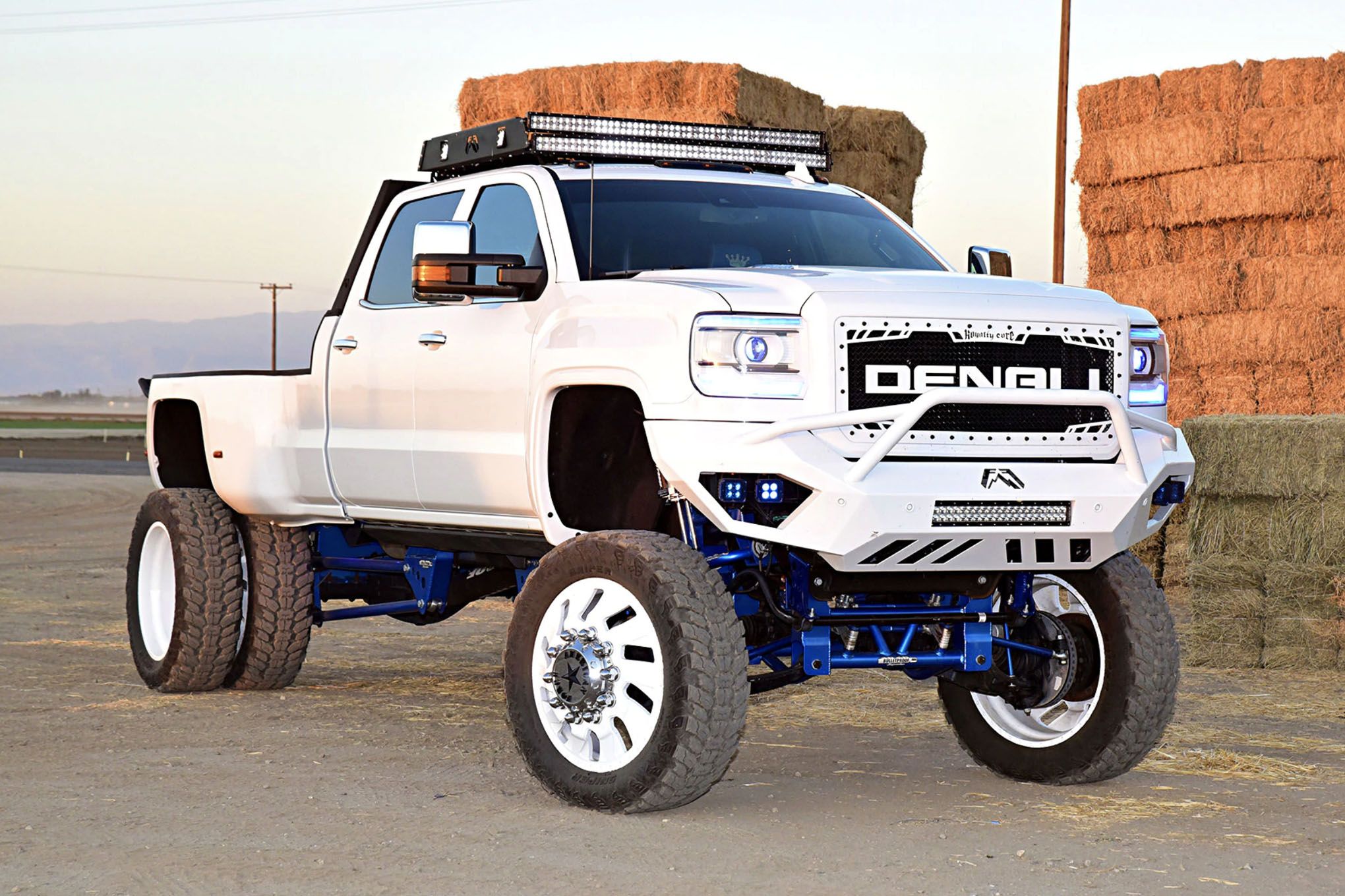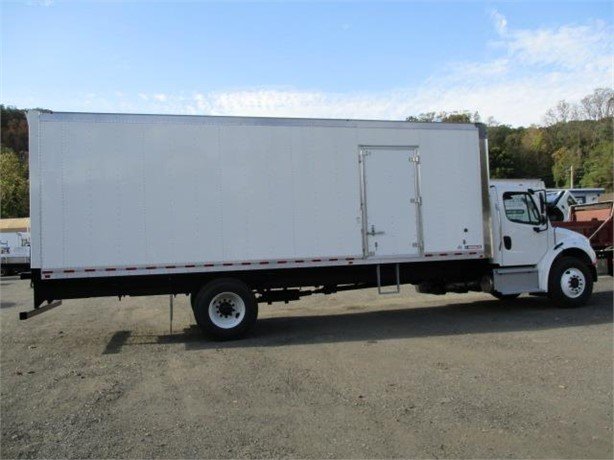Lifted Four Wheel Drive Trucks For Sale: Your Ultimate Guide to Off-Road Dominance
Lifted Four Wheel Drive Trucks For Sale: Your Ultimate Guide to Off-Road Dominance cars.truckstrend.com
The roar of an engine, the imposing stance, the promise of untamed trails – lifted four-wheel drive trucks embody a spirit of adventure and rugged capability that few other vehicles can match. More than just a means of transport, these machines are a statement, a lifestyle, and a gateway to conquering terrains that would halt lesser vehicles in their tracks. If you’ve found yourself drawn to the allure of enhanced ground clearance, aggressive tires, and a commanding presence on and off the road, then delving into the world of lifted 4×4 trucks for sale is your next logical step.
This comprehensive guide will navigate you through everything you need to know about purchasing a lifted four-wheel drive truck. From understanding the benefits and components to practical buying tips, potential challenges, and where to find your dream rig, we’ll equip you with the knowledge to make an informed and confident decision.
Lifted Four Wheel Drive Trucks For Sale: Your Ultimate Guide to Off-Road Dominance
Why Buy a Lifted 4×4 Truck? Unlocking the Advantages
The appeal of a lifted 4×4 truck extends far beyond mere aesthetics, though their imposing look is certainly a significant draw. Here’s a breakdown of the key advantages that drive enthusiasts and practical users alike to invest in these powerful machines:
- Unrivaled Off-Road Capability: This is arguably the primary reason. A lifted suspension system, combined with larger tires, significantly increases ground clearance. This means you can navigate over rocks, logs, deep ruts, and other obstacles without damaging your undercarriage. Improved approach, departure, and break-over angles allow the truck to climb steeper inclines and descend rugged terrain more effectively, making challenging trails accessible and enjoyable.
- Enhanced Visibility: Sitting higher off the ground provides a commanding view of the road, giving you a better perspective of traffic, potential hazards, and the terrain ahead. This improved visibility can contribute to a safer driving experience, especially in crowded urban environments or complex off-road situations.
- Aggressive Aesthetics and Personalization: There’s no denying the head-turning appeal of a well-executed lifted truck. They exude power, ruggedness, and a unique personality. For many owners, lifting their truck is a form of self-expression, allowing them to customize their vehicle to reflect their individual style and adventure aspirations. The ability to fit larger, more aggressive tires further enhances this distinctive look.
- Increased Utility and Versatility: While often associated with off-roading, lifted trucks also offer practical benefits for various heavy-duty tasks. The robust suspension components are often designed to handle more stress, which can be advantageous for towing heavy trailers, hauling substantial loads, or navigating challenging worksites. They are also popular choices for overland expeditions, allowing adventurers to carry more gear and explore remote locations with confidence.

Understanding Lift Kits and Suspension Systems: The Core of the Beast
Before you buy, it’s crucial to understand what makes a truck "lifted." The lift comes from modifications to the vehicle’s suspension system, designed to raise the body and frame higher off the axles. Not all lifts are created equal, and understanding the different types is key to making an informed purchase:
- Leveling Kits: These are the simplest and most affordable, typically raising the front of the truck by 1-3 inches to match the factory rake (the slight forward tilt). They improve aesthetics and allow for slightly larger tires but offer minimal off-road performance gain.
- Body Lifts: These kits use spacers placed between the truck’s body and its frame, effectively raising the body without altering the suspension geometry. They are inexpensive and allow for larger tires, but they don’t increase ground clearance under the axles and can sometimes expose the frame gap, which some find unsightly.
- Suspension Lifts: These are the most comprehensive and effective lifts, replacing or modifying key suspension components to achieve significant height increases (typically 2-12+ inches).
- Short Arm vs. Long Arm Lifts: Short arm lifts utilize shorter control arms and are common for moderate lifts. Long arm kits, often used for larger lifts, employ longer control arms that improve suspension articulation and ride quality, especially on uneven terrain.
- Coilover Conversions: These advanced systems replace traditional springs and shocks with integrated coilover units, offering superior damping, adjustability, and performance, often found in high-end builds.
- Key Components: Beyond the primary lift method, a quality lift kit often includes new shocks, springs (or coil spacers), control arms, track bars, sway bar links, steering components (like drop pitman arms), and sometimes extended brake lines and driveshafts. The quality and compatibility of these components are paramount for safety, ride comfort, and the longevity of the entire system.
What to Look For When Buying: A Comprehensive Inspection Guide
Purchasing a lifted truck, especially a used one, requires a keen eye and a thorough inspection. These vehicles have often seen more challenging conditions or extensive modifications.
- Define Your Purpose and Budget: Are you building an extreme rock crawler, a capable overlander, a stylish daily driver, or a robust work truck? Your intended use will dictate the type of lift, tire size, and overall build you need. Set a realistic budget that includes not only the purchase price but also potential maintenance, higher insurance premiums, and increased fuel costs.
- Thorough Visual Inspection:
- Frame: Look for cracks, bends, or signs of severe rust, especially around suspension mounting points. A compromised frame is a deal-breaker.
- Suspension Components: Inspect all parts of the lift kit – shocks, springs, control arms, bushings, tie rods, ball joints. Look for leaks, excessive wear, cracks, or signs of poor installation (e.g., loose bolts, improper alignment).
- Tires: Check for even wear, which indicates proper alignment. Cupping or feathering could point to suspension issues or alignment problems. Ensure the tires are appropriate for the lift and intended use.
- Drivetrain: Inspect universal joints (U-joints) and constant velocity (CV) boots for tears or leaks. Look for fluid leaks from the differentials, transfer case, and transmission.
- Brakes: With larger tires, effective braking is critical. Check the condition of brake lines, calipers, and rotors.
- Underbody: Look for dents, scrapes, or damage indicating heavy off-road use. While some trail rash is normal, excessive damage could suggest a hard life or neglect.
- Quality of Modifications: Ask about who installed the lift kit and what brand components were used. Professional installation by a reputable shop is a huge plus. Be wary of DIY jobs that look shoddy or use generic, low-quality parts. A cheap lift can compromise safety and ride quality.
- Vehicle History: Obtain a vehicle history report (CarFax, AutoCheck) to check for accidents, flood damage, or salvage titles. Ask for maintenance records, especially those related to the lift installation and subsequent alignments.
- Test Drive: This is non-negotiable.
- Steering: Does it feel loose, vague, or does it wander? Does the steering wheel return to center easily?
- Braking: Does the truck stop smoothly and confidently, or does it pull to one side?
- Ride Quality: Expect a firmer ride than stock, but it shouldn’t be overly harsh or bouncy. Listen for clunks, squeaks, or groans from the suspension.
- Drivetrain Noise: Listen for whining, grinding, or clicking noises, especially when accelerating or turning.
- Highway Manners: Does it track straight at speed? Is there excessive road noise or vibration?
New vs. Used Lifted Trucks: Weighing Your Options
The market for lifted trucks offers both brand-new, dealer-modified vehicles and a vast array of pre-owned custom builds. Each has its pros and cons:
- New Lifted Trucks:
- Pros: Full factory warranty (though lift components may void parts of it), latest technology, often professional installation by the dealer or authorized upfitter, peace of mind.
- Cons: Significantly higher cost, limited customization options if buying directly off the lot, specific lift kits might be proprietary or limited.
- Used Lifted Trucks:
- Pros: More affordable, wider selection of unique custom builds, potential to find a heavily modified truck for less than the cost of parts alone, depreciation has already occurred.
- Cons: No warranty (or very limited), potential for hidden issues or previous abuse, quality of modifications can vary wildly, requires more diligent inspection.
- Tips for Used: Always get a pre-purchase inspection (PPI) by an independent mechanic specializing in 4x4s. Check for rust in northern climates and inspect for poorly executed wiring or mechanical work.
Potential Challenges and Solutions
Owning a lifted 4×4 truck comes with a few considerations that prospective buyers should be aware of:
- Increased Operating Costs:
- Fuel Economy: Larger tires and increased aerodynamic drag will almost certainly reduce your miles per gallon (MPG).
- Tire Wear: Aggressive off-road tires tend to wear faster and are more expensive to replace. Improper alignment after a lift can also accelerate tire wear.
- Insurance Premiums: Some insurers may charge more for modified vehicles due to perceived higher risk or replacement cost.
- Maintenance Complexity: Lifted trucks can require more specialized maintenance. Components like ball joints, tie rods, and universal joints may wear out faster due to increased angles and stresses. Finding mechanics familiar with lifted vehicle issues can sometimes be a challenge.
- Handling Changes: A higher center of gravity can alter handling characteristics, making the truck feel less stable in turns or emergency maneuvers. Braking distances can also increase due to larger, heavier tires.
- Legalities and Regulations: Many states have laws regarding maximum vehicle height, tire protrusion, and fender coverage. Research your local laws to ensure the truck you’re considering is street-legal.
- Solutions:
- Budget Accordingly: Factor in higher fuel, tire, and maintenance costs.
- Regular Maintenance: Adhere to a strict maintenance schedule, especially for suspension and drivetrain components.
- Professional Alignment: Get regular alignments from a shop experienced with lifted vehicles.
- Defensive Driving: Adjust your driving style to account for the altered handling characteristics.
- Research Local Laws: Ensure compliance to avoid fines or safety issues.
Where to Find Lifted 4×4 Trucks For Sale
The market for lifted trucks is robust, offering several avenues for your search:
- New Car Dealerships: Many dealerships, especially those specializing in trucks, offer new trucks with factory or dealer-installed lift kits and accessory packages. These often come with some form of warranty.
- Specialty Off-Road Shops: These businesses often build and sell custom lifted trucks, both new and used. They have expertise in the modifications and can offer valuable insights and support.
- Online Marketplaces: Websites like AutoTrader, Cars.com, CarGurus, and eBay Motors have extensive listings. Filter by "lifted" or "4×4" to narrow your search.
- Local Classifieds & Social Media: Craigslist, Facebook Marketplace, and dedicated Facebook groups for 4×4 enthusiasts can be excellent sources for private party sales, often at competitive prices.
- Auctions: Public and dealer auctions can sometimes yield good deals, but they typically require more expertise in vehicle assessment and come with higher risk.
Estimated Price Table: Lifted Four Wheel Drive Trucks For Sale
Prices for lifted 4×4 trucks vary dramatically based on make, model, year, mileage, condition, the quality and extent of modifications, and market demand. The table below provides estimated ranges to give you a general idea. These are not fixed prices and can fluctuate significantly.
| Make/Model (Example) | Year Range | Lift Type (Example) | Mileage Range (Miles) | Estimated Price Range (USD) | Key Considerations |
|---|---|---|---|---|---|
| Jeep Wrangler (JL/JK) | 2012-2023 | 2.5" – 4.0" Suspension | 10,000 – 100,000 | $25,000 – $70,000+ | Iconic off-roader, high customization, strong resale. Rubicon models fetch premium. |
| Ford F-150 / F-250 | 2015-2023 | 4.0" – 6.0" Suspension | 20,000 – 120,000 | $30,000 – $80,000+ | Popular for daily driving & work, extensive aftermarket. Diesel F-250s are pricier. |
| Ram 1500 / 2500 | 2014-2023 | 4.0" – 6.0" Suspension | 20,000 – 120,000 | $28,000 – $75,000+ | Coil spring rear suspension often gives better ride. Cummins diesel 2500s are highly sought. |
| Chevrolet Silverado / GMC Sierra 1500 / 2500 | 2014-2023 | 4.0" – 6.0" Suspension | 20,000 – 120,000 | $27,000 – $70,000+ | Solid all-around performers, good value. Duramax diesel 2500s are strong. |
| Toyota Tacoma / Tundra | 2010-2023 | 2.0" – 3.5" Suspension | 15,000 – 150,000 | $22,000 – $65,000+ | Legendary reliability, strong resale, especially for off-road trims (TRD Pro). |
| Older/Budget Options | 2000-2010 | Various Lifts | 150,000 – 250,000+ | $8,000 – $20,000 | More prone to rust/wear, require more immediate maintenance. Great for project builds. |
Disclaimer: The prices above are highly generalized estimates and can vary significantly based on specific trim levels, engine type, exact mileage, vehicle condition, quality of the lift kit and other modifications, regional market conditions, and whether it’s a private sale or dealer purchase. Always conduct thorough research and get a professional appraisal.
Frequently Asked Questions (FAQ)
Q1: How much does a lift kit typically cost to install?
A1: The cost of a lift kit itself can range from a few hundred dollars for a leveling kit to several thousand for a high-end suspension lift (e.g., $500 – $5,000+). Installation labor can add another $500 – $2,000+, depending on the complexity of the kit and shop rates.
Q2: Does lifting a truck void the factory warranty?
A2: Generally, yes. While the Magnuson-Moss Warranty Act protects consumers, dealerships can deny warranty claims for parts that were directly affected or failed due to aftermarket modifications. A reputable dealer-installed lift might come with its own warranty, or specific parts might be covered by the lift kit manufacturer. Always clarify warranty implications before purchase.
Q3: What are some reputable brands for lift kits?
A3: Some of the most respected brands in the industry include BDS Suspension, Rough Country, Fabtech, Pro Comp, Rancho, Bilstein, ICON Vehicle Dynamics, King Shocks, and TeraFlex (especially for Jeeps). Researching specific kits for your desired vehicle model is recommended.
Q4: Do lifted trucks get worse gas mileage?
A4: Yes, almost always. The combination of increased vehicle height (more aerodynamic drag) and larger, heavier, often more aggressive tires (more rolling resistance and unsprung weight) significantly reduces fuel efficiency compared to a stock truck.
Q5: Are lifted trucks harder to drive?
A5: They can be. The higher center of gravity changes handling characteristics, potentially leading to more body roll in turns and a less stable feel at high speeds. Larger tires can also make steering feel heavier or less precise. Braking distances might increase. It requires an adjustment in driving style, particularly in emergency maneuvers.
Q6: What should I specifically check for rust on a lifted truck?
A6: Pay close attention to the frame (especially where suspension components attach), suspension mounting points, brake lines, fuel lines, body mounts, and inside the wheel wells. Modifications can sometimes create new areas for moisture to collect, accelerating rust.
Q7: Can I finance a lifted truck?
A7: Yes, financing a lifted truck is generally the same as financing any other vehicle. Lenders will consider the truck’s value, your credit score, and other standard financing criteria. If the lift is an aftermarket addition, its value might or might not be fully factored into the loan by all lenders.
Conclusion
The journey to owning a lifted four-wheel drive truck is an exciting one, opening doors to new adventures and a commanding presence on the road. These vehicles represent a unique blend of rugged utility, enhanced capability, and personalized style. However, making an informed decision requires understanding the complexities involved, from the mechanics of lift kits to the nuances of vehicle inspection and potential long-term costs.
By thoroughly researching your options, carefully inspecting potential purchases, understanding the implications of modifications, and budgeting wisely, you can confidently navigate the market for lifted 4×4 trucks for sale. The right lifted truck isn’t just a vehicle; it’s a reliable companion for your next great adventure, ready to take you where others can only dream of going. Embrace the height, conquer the terrain, and enjoy the ride.





